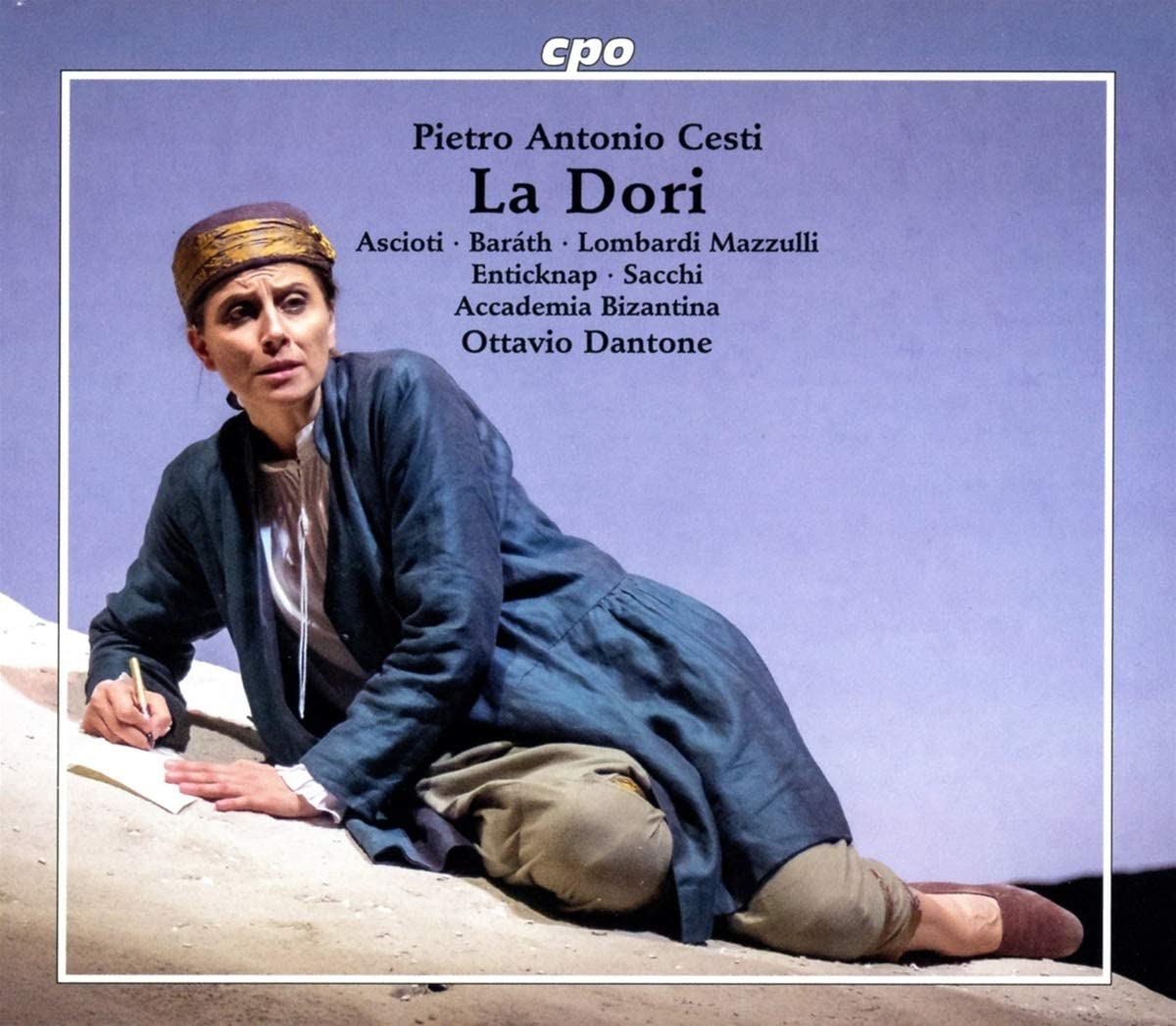CESTI La Dori (Dantone)
View record and artist detailsRecord and Artist Details
Genre:
Opera
Label: CPO
Magazine Review Date: 11/2020
Media Format: CD or Download
Media Runtime: 161
Mastering:
DDD
Catalogue Number: CPO555 309-2

Tracks:
| Composition | Artist Credit |
|---|---|
| La Dori |
Pietro Cesti, Composer
Accademia Bizantina Alberto Allegrezza, Dirce, Tenor Bradley Smith, Arsete, Tenor Emöke Baráth, Tolomeo, Soprano Federico Sacchi, Artaxerxes, Bass Francesca Ascioti, Dori, Alto Francesca Lombardi Mazzulli, Arsinoe, Soprano Konstantin Derri, Bagoa, Countertenor Ottavio Dantone, Conductor Pietro Di Bianco, Erasto, Bass-baritone Rocco Cavalluzzi, Golo, Bass Rupert Enticknap, Oronte, Countertenor |
Author: Iain Fenlon
That Cesti’s La Dori had such a varied performance history says something about the changing tastes of 17th-century opera audiences. Premiered at the court theatre in Innsbruck, it then travelled to Florence, where it was spectacularly staged for a Medici wedding celebration. Then, having originated in the tradition of elite court opera, La Dori moved into the orbit of the Venetian public theatres. This marked the beginning of a remarkable success story, and in the following quarter of a century it was given at least 30 times, mostly in northern Italy.
In common with most 17th-century Italian operas, its text is unstable. As it moved from one house to another, La Dori was adapted according to the tastes of specific audiences and the abilities of individual singers. The prologue, often directed at local patrons, was frequently rewritten; no fewer than 14 versions, some with music by other composers including Stradella, are known. For the four different Venetian productions given in the space of just 10 years, recitatives were progressively shortened, new arias inserted and comic scenes given greater emphasis, no more so than in the music for the nurse Dirce (sung as in ‘S’io son vecchia’ with mischievous relish by the tenor Alberto Allegrezza). Elsewhere the musical weight is concentrated in arias, elaborated into intense self-contained scenes. In episodes such as ‘Speranze fermate’ (here exquisitely shaped by Rupert Enticknap), with its beautifully crafted exchanges between voice and instruments, much of the emotional life of the opera is crystallised.
La Dori is rarely performed on the stage, largely because its convoluted plot, with its implausible twists of fate, mistaken identities and amorous confusions, makes the story so exhausting to follow. For this recording, Ottavio Dantone has sensibly based his edition on the Vienna manuscript, the most authoritative of the sources. It contains some of the finest operatic music to have been composed in the course of the entire 17th century, and Dantone and the Accademia Bizantina do it proud. Capitalising on the work’s origins in a princely setting, they opt for a more expansive approach to instrumentation which takes them beyond the standard grouping of single strings and modest continuo forces that were standard in the Venetian theatres. In addition to adding more string players to give a total of five violins, two cellos and a violone, this involves a couple of recorders and a generous continuo ensemble including archlute, theorbo, chamber organ and harp (this latter somewhat implausibly). This more colourful palette acceptably enlivens the sparse contours of the score, and the ensemble’s generally discreet approach (the sinfonias understandably excepted) to the application of improvised ornamentation, so often overdone by Baroque performers, is to be greatly welcomed. In all, a fine achievement.
Discover the world's largest classical music catalogue with Presto Music.

Gramophone Digital Club
- Digital Edition
- Digital Archive
- Reviews Database
- Full website access
From £8.75 / month
Subscribe
Gramophone Full Club
- Print Edition
- Digital Edition
- Digital Archive
- Reviews Database
- Full website access
From £11.00 / month
Subscribe
If you are a library, university or other organisation that would be interested in an institutional subscription to Gramophone please click here for further information.




